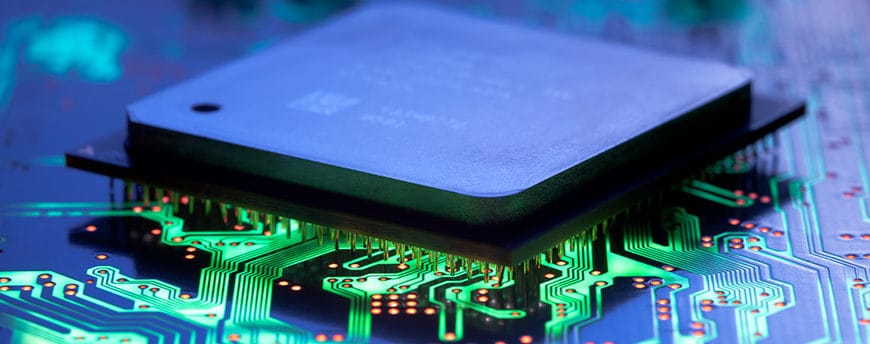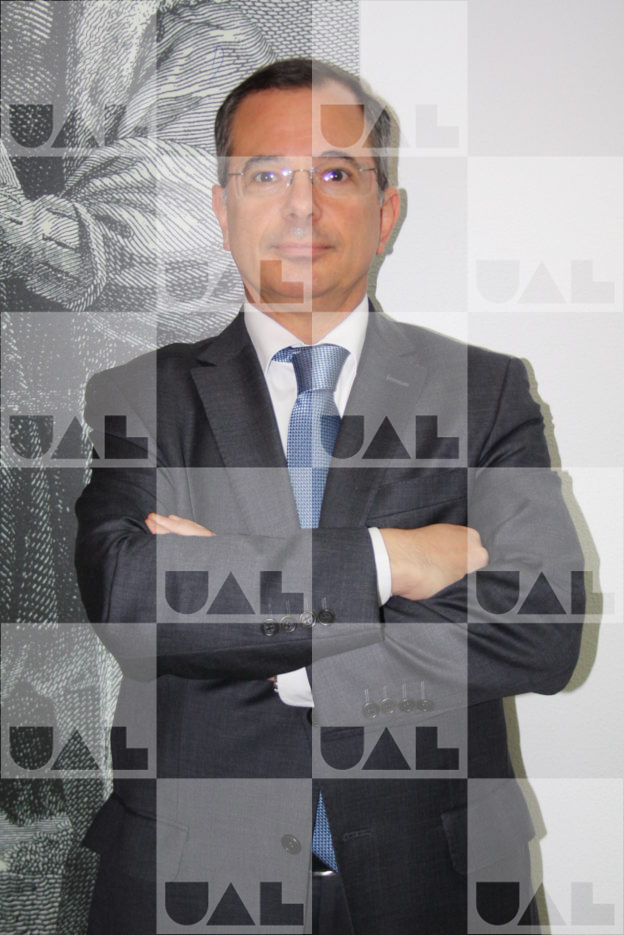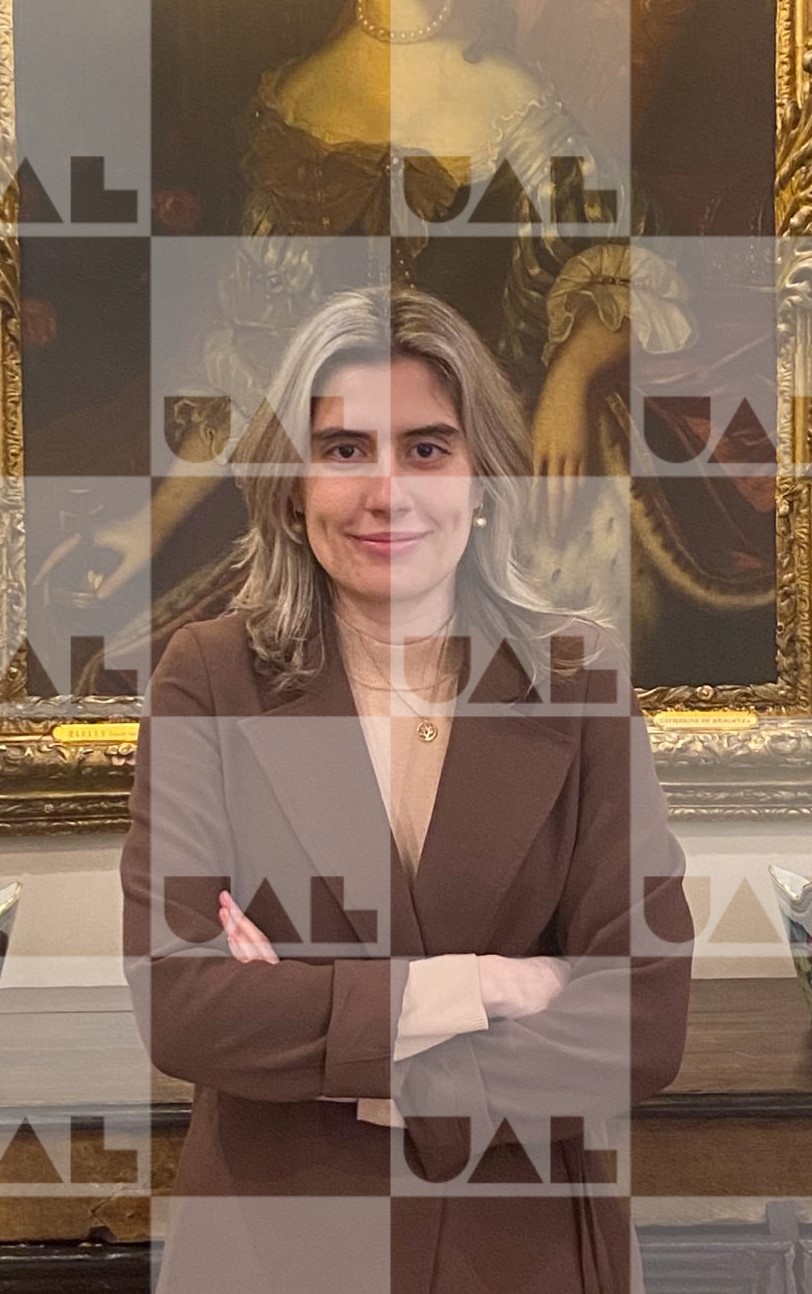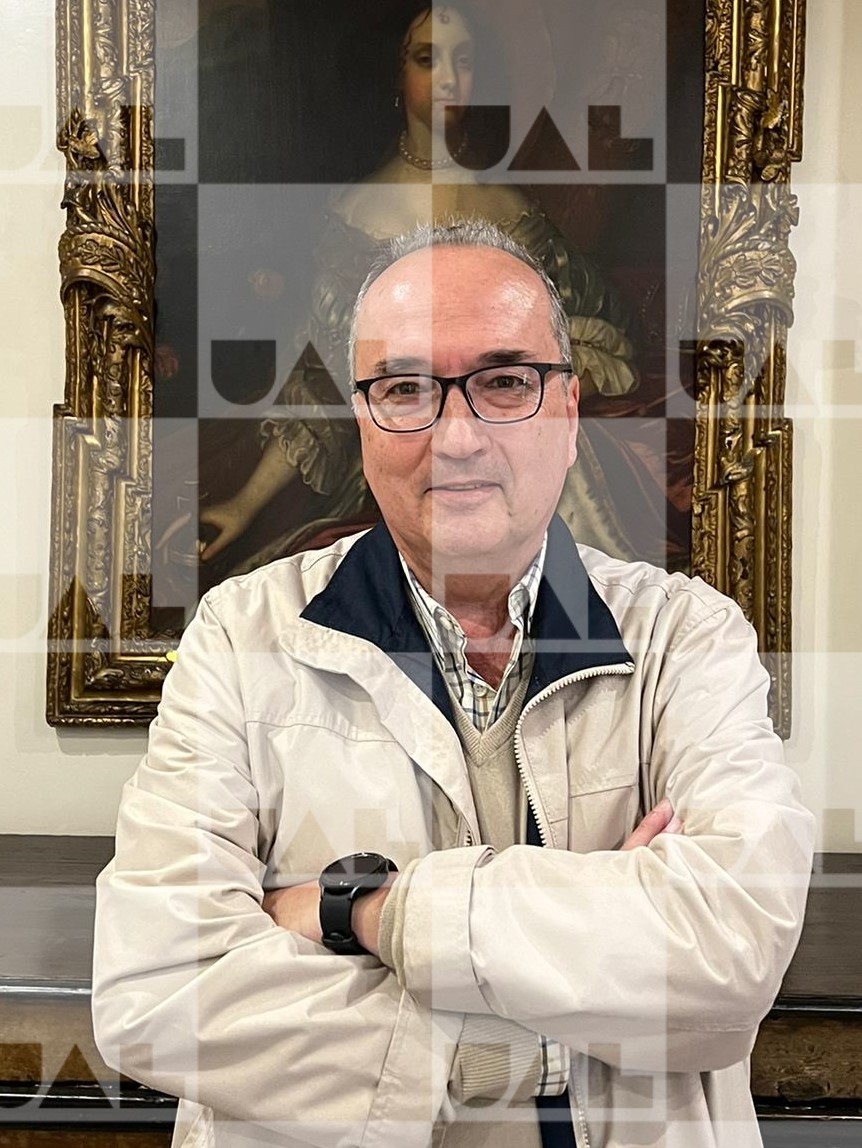ENTRANCE TESTS
Cumulatively the following evidence:
- 19-Mathematics A
- 07-Physics and Chemistry
Documents
The Degree in Electronics and Telecommunications Engineering (LEET) provides advanced training in the field of Electrotechnics, with particular orientation towards the insertion of Electronics and Networks and Telecommunications in companies / organizations, also contemplating the acquisition of skills in the complementary areas of production and distribution Energy, Robotics and Computing.
LEET's main objectives are to train staff with high technical competence in the fields of Electronics and Telecommunications, in the selection of tools and methodologies to be used in the development of these technologies, in the management of the development process, in the implementation and integration of these in organizations, in their multiple aspects, considering the extended organization and the current society.
LEET intends to train the catalyzing agents for the transformation of organizations, through processes supported by new technologies in the areas of Electronics and Telecommunications.
LEET is supported by four main lines of investigation:
- Signal Processing for Telecommunications Systems
- Internet of Things
- Sea Technologies
- unmanned vehicles
The various partnerships of the DCT, including with the Cisco Academy, with the Department of Oceanography and Fisheries of the University of the Azores, with the Mission Structure for the Extension of the Continental Shelf and with the company YDreams give coherence to these main lines of research.
The LEET faculty has a PhD ratio of around 90%, and professional experience extended to industry and international environments. In addition to the Center for Research in Technologies – Autonoma TechLab, LEET teachers are also affiliated with other research centres, namely the Telecommunications Institute, the Center for Computing and Social Responsibility [United Kingdom] and INESC-ID, among others. .
DR Accredited by A3ES, on 02/06/2015.
SYLLABUS
Algorithm and Programming
6 ECTS
• Introduce computers, programming techniques and methodologies;
• Introduce the student to programming, in particular, in the imperative model;
• Learning to formalize problems to solve them with programming;
• Begin the practical use of the Python language, practicing problem solving and coding algorithms in this language.
Mathematics I
6 ECTS
- Consolidate pre-university contents and ensure the transition to university mathematics;
- Complete the learning of Differential and Integral Calculus, namely through the Fundamental Theorem of Calculus;
- Achieve a high degree of dexterity with trigonometric functions, their fundamental identities and integration and derivation techniques;
- Deepen the complex analysis techniques necessary for electrical engineering.
• Introduce the fundamentals and main applications of discrete mathematics, essential for the understanding of computer science and computing;
• Develop an understanding of the concepts and methods of these matters at a qualitative and quantitative level, and the ability to solve problems through reasoned sequential reasoning;
• Develop the ability to read, understand and build mathematical reasoning, with consistent logic and proof components;
• Integrate computational methods and technologies in context and develop algorithmic thinking skills to understand and design algorithms.
Circuit Analysis
6 ECTS
- Understand the derivation of circuit analysis rules and the main electrical and electronic components from the laws of electromagnetism;
- Understand basic analog electrical circuits;
- Analyze analog circuits in AC regime;
- Recognize the function of simple circuits in the various areas of Eng. Electronics and Computers.
Digital systems
6 ECTS
• Familiarize students with the basic elements of digital circuit development;
• Analysis and design of combinatorial and sequential logic circuits;
• Understand digital logic at the gate and switching level, within the scope of combinatorial and sequential circuits;
• Gain experience in computer-based digital design tools.
- Understand the system of production, transport and distribution of electrical energy:
a) energy and power;
b) operation of the three-phase electrical system;
c) transport and distribution: the electric power line;
d) energy transit, using the direct current model;
e) mechanisms of electromechanical energy conversion, energy transfer and alteration
of tension levels;
f) characterize the national electric energy system and tariff configuration of electric energy in
Portugal.
Computer Architecture
6 ECTS
- Understand the physical and logical architecture of a computer, namely:
a) the software-hardware interaction;
b) respective programming;
c) performance evaluation.
Physical
6 ECTS
• Introduce the fundamental concepts and methods of Physics, focusing on Mechanics, Thermodynamics and Electromagnetism in an integrated way;
• Consolidate and deepen the basic knowledge acquired in Secondary Education on these Physics subjects;
• Develop an understanding of the concepts and methods of Physics at a qualitative and quantitative level, and the ability to solve problems through sequential reasoning based on the fundamental principles and laws of Physics;
• Develop the ability to contextualize and apply the knowledge of Physics acquired in the discipline within the scope of the course and future professional activities.
Mathematics II
6 ECTS
- Generalize the study of real variable functions to functions with more than one variable, developing methods of representation and visualization in three-dimensional space;
- Extend the theory of differential calculus in R to functions with more than one variable, with a view to optimizing these functions;
- Develop integration techniques in dimensions greater than 1, with special emphasis on the calculation of volumes, areas and the theorems of Stokes and Gauss, fundamental to the study of electromagnetism;
- Start studying Linear Algebra through matrices and the classic algorithm for solving systems of linear equations;
- Develop the abstract study of spaces and linear transformations, and study the application of Linear Algebra to solving systems of linear differential equations.
Operating Systems
6 ECTS
- It is intended that students understand the structure of an operating system and its relationships with main memory;
- Students should develop skills that make it possible to explain the operation of an operating system and understand its role in the adoption of software and in the overall functioning of computers.
Numerical methods
6 ECTS
The Numerical Methods, integrated in the scientific area of Mathematics, has as main objective the acquisition, by the students, of abilities and competences that allow the numerical resolution of mathematical problems, and this Curricular Unit will address the theoretical foundation of each subject/chapter, implemented in algorithms and subsequent practical implementation on a computer. The aim is to sensitize the student to mathematical modelling, to motivate him to create mathematical models that represent the essential aspects of mathematical and/or physical systems or processes. A quick presentation is made of some of the software that can be used in Numerical Methods, giving particular emphasis to Excel, by itself, as well as supported by VBA, a tool used in the development and resolution of problems.
The following objectives are defined:
- Recognize mathematical modeling as a problem solving tool applied to engineering;
- Know different ways of approaching numerical results and key concepts about errors and precision;
- Recognize the applicability of the Taylor series in the application of numerical methods;
- Use of numerical methods to solve problems of difficult analytical resolution.
Electromagnetism and Optics
6 ECTS
Develop the ability to qualitatively and quantitatively understand the fundamental physical-mathematical concepts and methods of Electromagnetism and Optics, in a progressive approach from an introductory to an intermediate level, with the introduction of the necessary elements of Mathematics and reference to relevant technological applications.
Consolidate and deepen the basic knowledge acquired in Secondary Education and UC Physics in the scope of Electromagnetism and Optics.
Develop the ability to solve problems through sequential reasoning based on the fundamental principles and laws of Electromagnetism and Optics, framed in the general context of Physics.
Develop the ability to contextualize and apply the knowledge of Electromagnetism and Optics acquired at the UC within the scope of the course and future professional activities.
electronics I
6 ECTS
- Understand the physical fundamentals behind semiconductor electronics, namely involving diodes and transistors;
- Be able to analyze semiconductor, analog and digital logic electronic circuits;
- Know the characterization parameters of each circuit;
- Dimensioning circuits with BJT's, namely single-stage and differential amplifier circuits.
Provide students with essential preparation to:
- Describe signals in the time domain (continuous and discrete), understand their elementary transformations as well as the sampling operation.
- Represent periodic and non-periodic signals (continuous and discrete) in the frequency domain using Fourier analysis.
- Understand linear systems, describing them both in the time domain and in the frequency domain.
- Design and simulate digital filters.
Networks and Communications
6 ECTS
- Provide a general and coherent overview of the available network architectures;
- Reference models such as OSI and TCP/IP;
- Basic concepts about transmission and communication of information;
- The architectures analyzed will be illustrated with the presentation of Ethernet, Token Ring, FDDI technologies and practical examples of building widened networks, using real hardware and simulators.
Probabilities and Statistics
6 ECTS
- Use and interpret data;
- Understand the concept of sampling;
- Learn to apply descriptive statistics techniques on engineering, economics and management problems and interpret results;
- Relate theoretical and practical concepts;
- Carry out a critical analysis of the results.
Automation and Control
6 ECTS
Provide students with the ability to understand mechanical, pneumatic and electronic systems by deepening their knowledge of analysis, design and simulation of automatic control systems.
The following objectives are defined:
- Mastery of fundamental concepts of linear systems;
- Mastery of the fundamental concepts of frequency modeling;
- Ability to characterize systems by time and frequency response;
- Ability to realize a controller for SISO linear systems.
Network Engineering
6 ECTS
- Review of networks and continuation of their learning, in line with the contents taught in Networks and Communications;
- Study of MAN/WAN Networks;
- Provide the necessary skills for the interconnection of different local networks, using metropolitan or wide area networks, including the definition of the necessary Service Level Agreements;
- Provide the knowledge, skills and competences necessary for the design of local and wide area networks, from the requirements definition phase, through the acceptance tests.
electronics II
6 ECTS
• interpret and design circuits and assemblies made with operational amplifiers;
• interpret the main characteristics of active electronic circuits using operational amplifiers, such as active filters, oscillators or function generators and tuned amplifier circuits;
• design feedback loops and analyze their stability.
• Obtain skills in the area of installation of low voltage electrical energy systems;
• Knowledge of standards, regulations and techniques applicable to these systems;
• Know the general rules associated with electrical hazards, their prevention and protection;
• Know, in the field, what are the networks and equipment presented in the theory.
Project management
6 ECTS
• Understanding the role of Projects and Project Management in organizations;
• Familiarization with the main tools and techniques used in Project Management;
• Learning the Project Management standard based on the PMBOK Guide;
• Learning of Project Process Groups;
• Learning the Key Knowledge Areas of Project Management;
• Learning of Project Management Support Knowledge Areas;
• Learning of Planning techniques, definition of the scope of Projects and cost estimation;
• Familiarization with Earned Value Management;
• Use of MS Project in the different components of a project, phases, activities, tasks, sub-tasks, milestones, restrictions and calendars.
Artificial intelligence
6 ECTS
Telecommunications Systems
6 ECTS
• Provide detailed insight into advanced telecommunications systems. Understand advanced concepts about transmission channels and electromagnetic propagation;
• Understand the various types of digital signals and their transmission techniques used in advanced telecommunications systems;
• Understand single-antenna and multi-antenna transmission methods;
• Understand the various signal detection techniques.
Project Laboratory
10 ECTS
• In this Curricular Unit, the End of Course Project is developed, integrating knowledge and skills acquired in the course, or complementing with other necessary studies;
• Some Projects aligned with the areas of research in progress are proposed, providing students with some development/applied research activities;
• Projects in collaboration with Companies and other Organizations are encouraged, in particular UAL, giving priority to the application of new technologies and innovative solutions in real Project experience;
• In these Projects carried out in groups, it is intended that students deepen and acquire skills and experience, necessarily carrying out a practical implementation in the domain studied.
Computer Security
5 ECTS
- Understand the organization of the input/output system of a computing system and its programming;
- Acquire familiarity with the architecture and programming of microcontrollers;
- Know the structure and technology of the main peripherals and their interconnection infrastructures;
- Understand and use microprocessors/microcontrollers in the context of real systems.
• Review of the fundamental concepts of wireless telecommunications;
• Knowledge of the main aspects related to mobility, in particular technologies and protocols for wireless networks;
• Mastery of emerging issues in networks (3G, 4G, 5G systems, security, quality of service, etc.) and positioning systems;
• Ability to evaluate, design and develop new wireless communication products, protocols and services, in particular 5G cellular communications;
• Critical analysis of current limitations and future challenges in wireless networks.
Robotics Systems
5 ECTS
- The acquisition, by the students, of abilities and competences, related to the elementary knowledge of robotics;
- Possess basic knowledge in Vision, Trajectory Planning, Sensors and Actuators, Direct and Inverse Kinematics;
- Being able to build an elementary robot;
- Use Matlab as a tool for robotics solutions.















